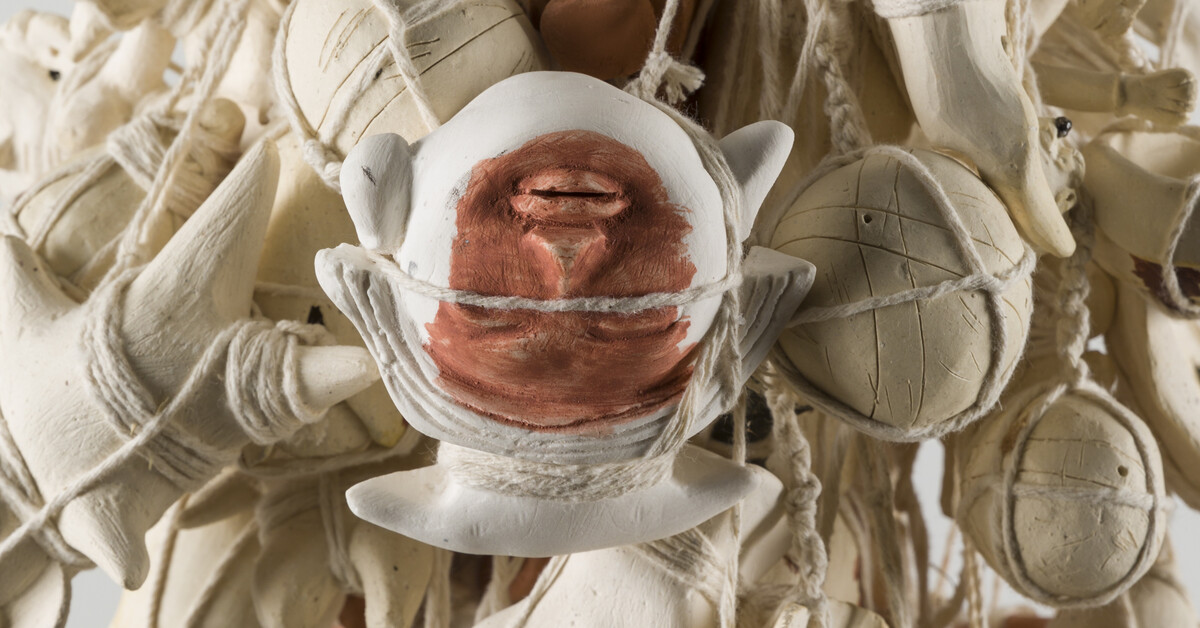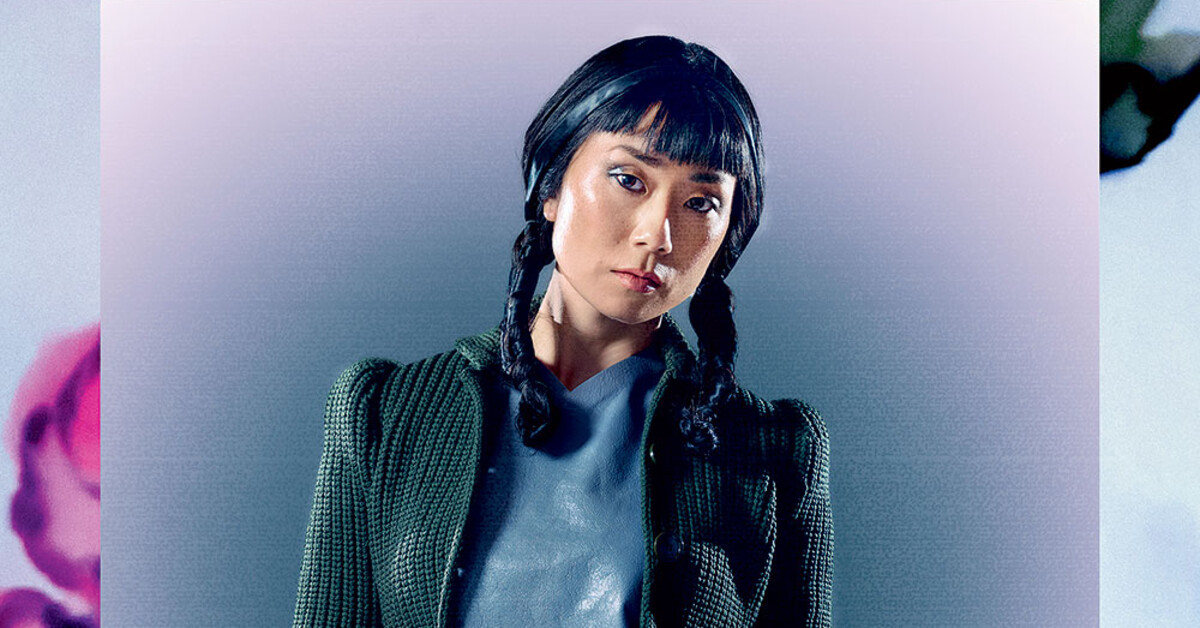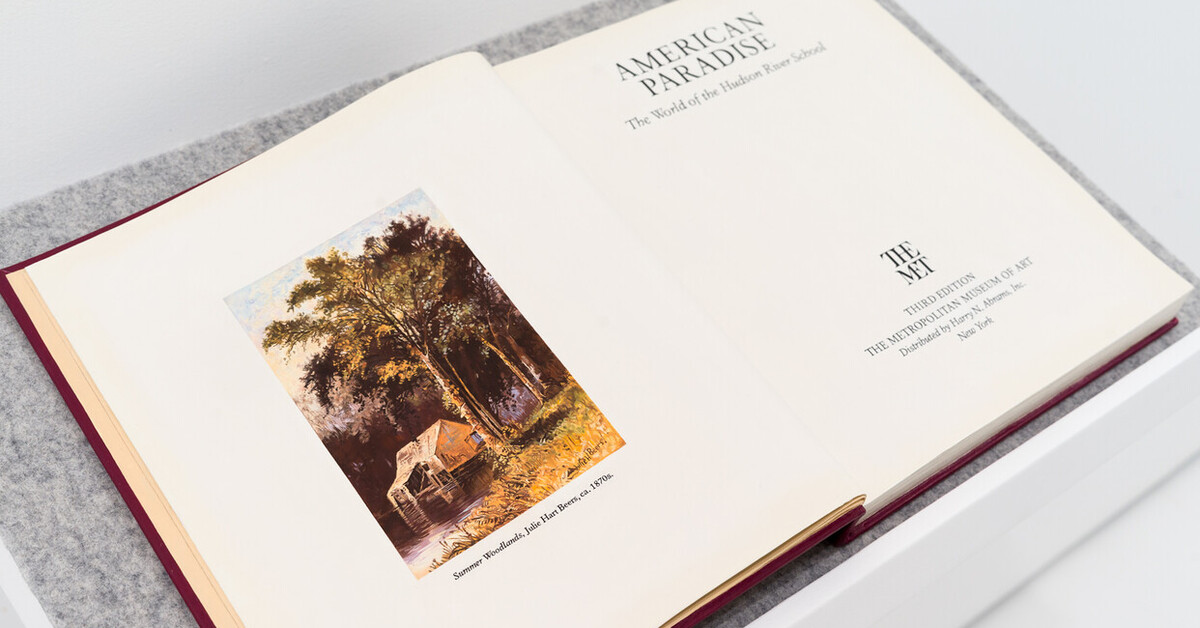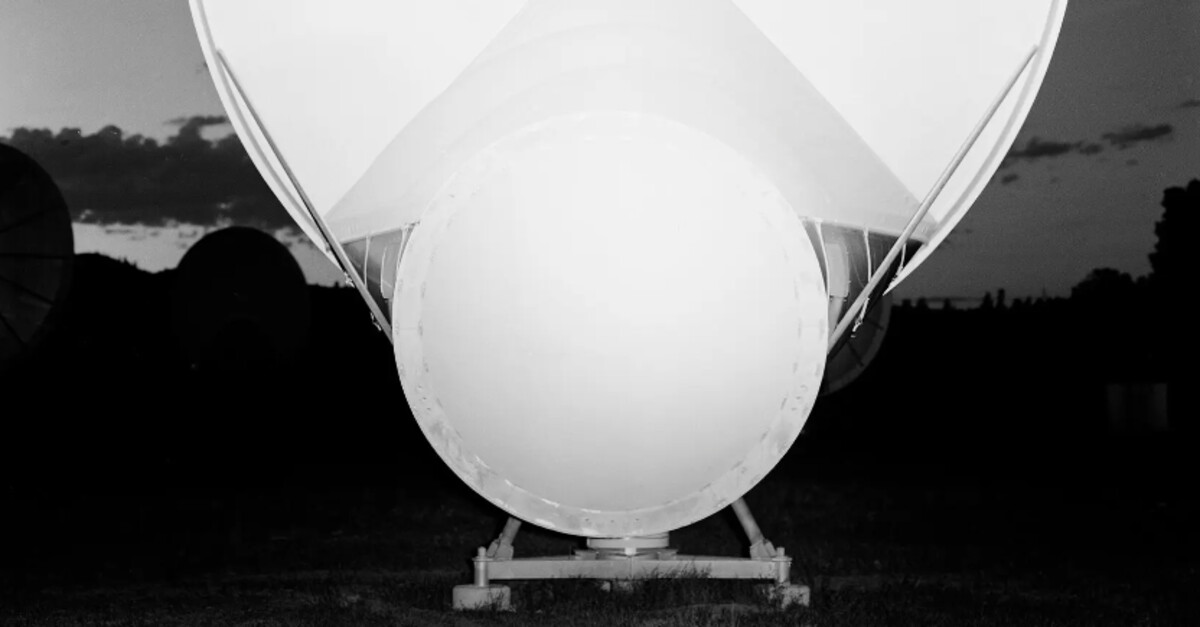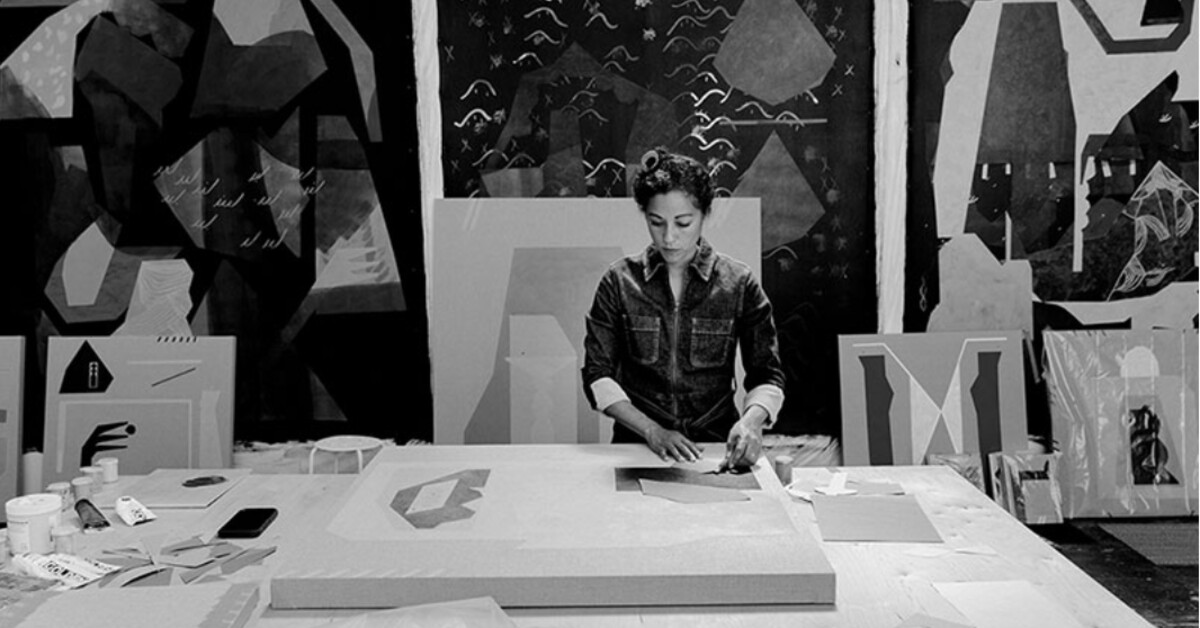“As if the material did not allow for linearity”: Kaveri Raina’s Paintings on Burlap
Sixty Inches From Center / Oct 7, 2024 / by Cecilia González Godino / Go to Original
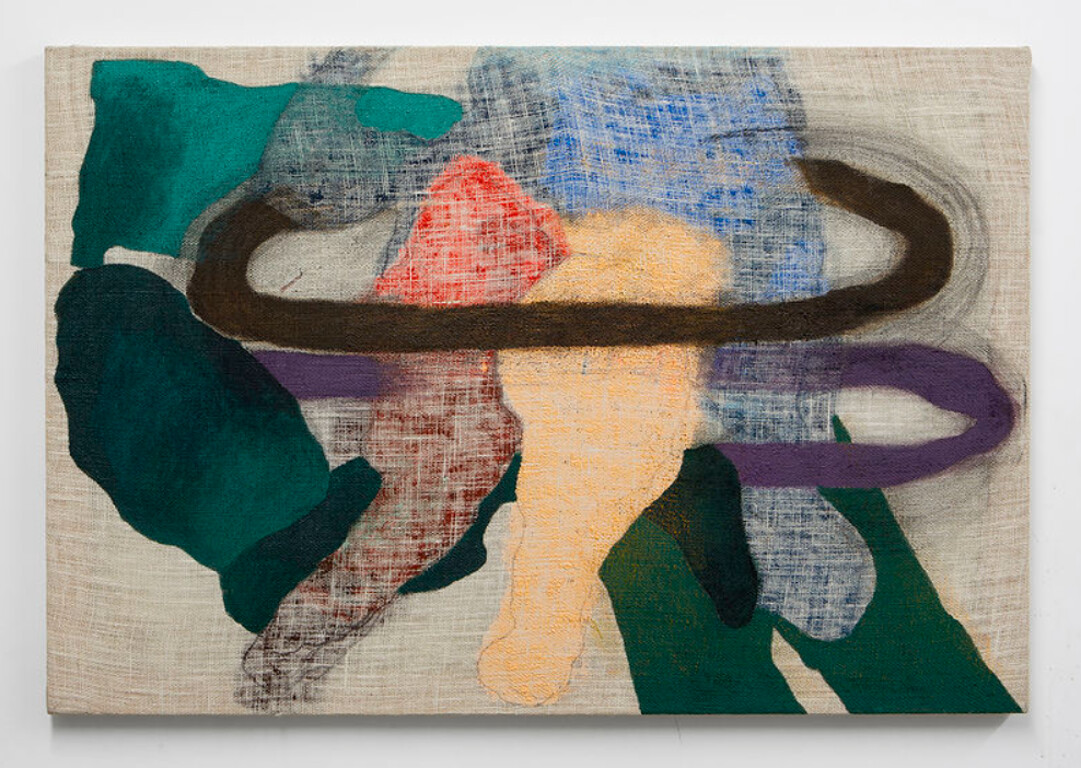
Image: Kaveri Raina, Squinting While Fading, I Became, 2019, acrylic, graphite, oil pastel, burlap, 36 in × 52 in. A painting on brown burlap with abstract colorful shapes sometimes resembling human figures. Two circular patterns surround the human-like shapes. Courtesy of the artist and PATRON.
Before visiting Kaveri Raina’s second solo show at PATRON in the fall of 2023, I had seen her paintings online, and I was irrevocably drawn by the saturation of their shapes and colors. And yet that experience took a back seat when I saw the works in person. There is something in the Brooklyn-based artist’s work that exudes materiality and presence while hinting at a state of suspension, contention, and opacity.
Raina grew up in New Delhi and migrated to the Midwest at the age of eleven, but her diasporic journey—like her paintings—was not linear. She mentioned to me that she paints in circular motion, listening and yielding to the texture of the burlap and inhabiting the place where memory and speculation converge. What happened? What could have happened? What is happening? What will happen? Her work is a reaction, but a continuous and recurring one that encompasses more and more in the process. A reaction to her migrant experience, cultural roots, and childhood memories; a reaction to traumatic events, personal and collective displacement….
Raina uses burlap as her canvas and as a diasporic element—a porous, rough yet versatile fabric in constant migration, always subject to its contents and often discarded when empty. Originary of India but soon exported to the rest of the world at the height of colonial trade, hessian or burlap is a woven fabric made of vegetable fibers extracted from the skin of the jute plant. A strong, enduring and adaptable material, its history is inevitably laced into the global history of plantations, and was particularly functional in tropical environments due to its resistance to heat and humidity.
Burlap was used as a container for the products of these plantations but also as backing for rugs or to protect the exposed roots of a tree before being transplanted into the ground. It is diasporic and migratory by nature. It is a material that does not hide its unstable and coarse nature, its imperfections, and the irregularity of its surface. Like a skin, it is epidermic. And the artist engages in conversation with all its properties, painting front and back, stitching different fragments together, yielding to the fabric.
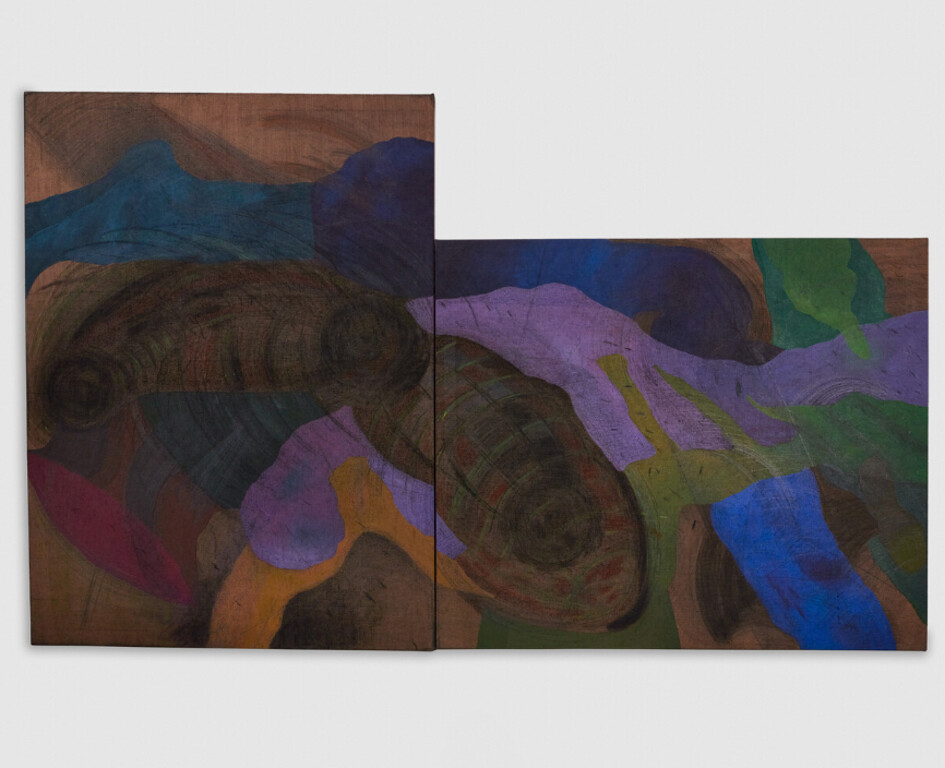
Image: Kaveri Raina, …and still raging, treading through the desolate silence, 2023, acrylic, oil pastel, graphite, burlap, 68 in × 110 in. Two painted canvas in a wall, one placed horizontally and the other vertically. With earthy tones, the paintings feature human-like figures and circular shapes. Courtesy of the artist and PATRON.
Like this process, Raina’s practice is difficult to frame in fixed terms. Her art seems unfinished, maybe interrupted, and one wonders what is interrupting it and why. She engages with the silences of history and weaves a line between the personal and the historical, between the explicit and implicit events of identity. She references stories of women, in History and in her history, who inhabited (un)conventional lives. Women like Rani Lakshmibai, who revolted against British colonial rulers in the Indian Rebellion of 1857, or Jyoti Singh, who was savagely gang raped and murdered in Delhi in 2012. Women whose lives were interrupted by the power and urgencies of men. Women like her mother or her sister—or even her. What fibers of these women have been woven into her own identity?
Painting on burlap is a labor-intensive act, an act of resistance. But above all it is a fibrous act. The fiber of the burlap, its materiality, plays an active role in the final product. Raina activates both sides of the burlap, almost injecting the colors without knowing where they are headed, forming a dialogue between the surface and the depths that escapes her control. She hints at what lies behind and beyond sight to force a return, “a silent, yet harmless return” that “would always be the disaster after the disaster,” as echoes one of her titles. Yet many questions remain unanswered: A return from where? From what point of origin? What is the cause of the disaster and what does the aftermath look like?
Intuitively, the search for answers brings me back to the material, to the burlap and its inherent roughness. I remember Raina talking about her childhood and explaining to me that burlap rice bags cannot contain all the grains—that some are inevitably lost through the pores of the fabric. In the same way that the burlap cannot contain all the grains of rice, maybe the fabric of memory in Raina’s work is porous.
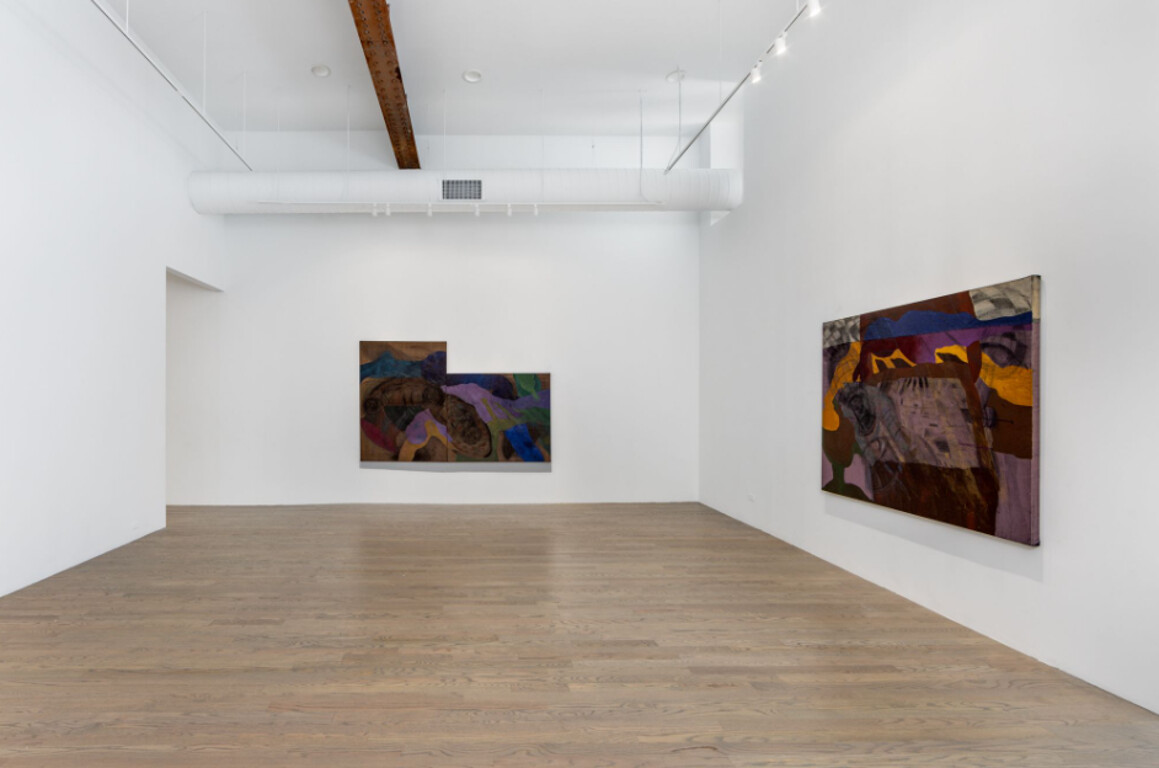
Image: Installation view of Songs of silence, yet bluebirds hum at Patron Gallery (September 9-November 4, 2023). A white-wall gallery with art on the wall. One bigger painting on the right, and a diptych at the center of the image. Courtesy of the artist and PATRON.
There is also a dissonance between the white gallery wall and the stretched burlap, almost as if they spoke two different languages. The irregularity of the material exceeds the lines of the gallery’s frame, casting uneven shadows and creating an illusion of belonging while stretching the boundaries of traditional representation. Her visual language unleashes a multilayered storytelling process obfuscated by the politics of place and materiality. What does the stretched burlap contain in the space of a gallery in Chicago or New York?
The artist returns again and again to the same strategies, hovering over the same words and questions in the quest for new potential endings: the saturation and choice of colors; the circular, almost hypnotic movements of the brush; the incomplete figures that can be glimpsed in the shadows; the unpredictability of the stretched burlap; the smoky volatility of graphite….
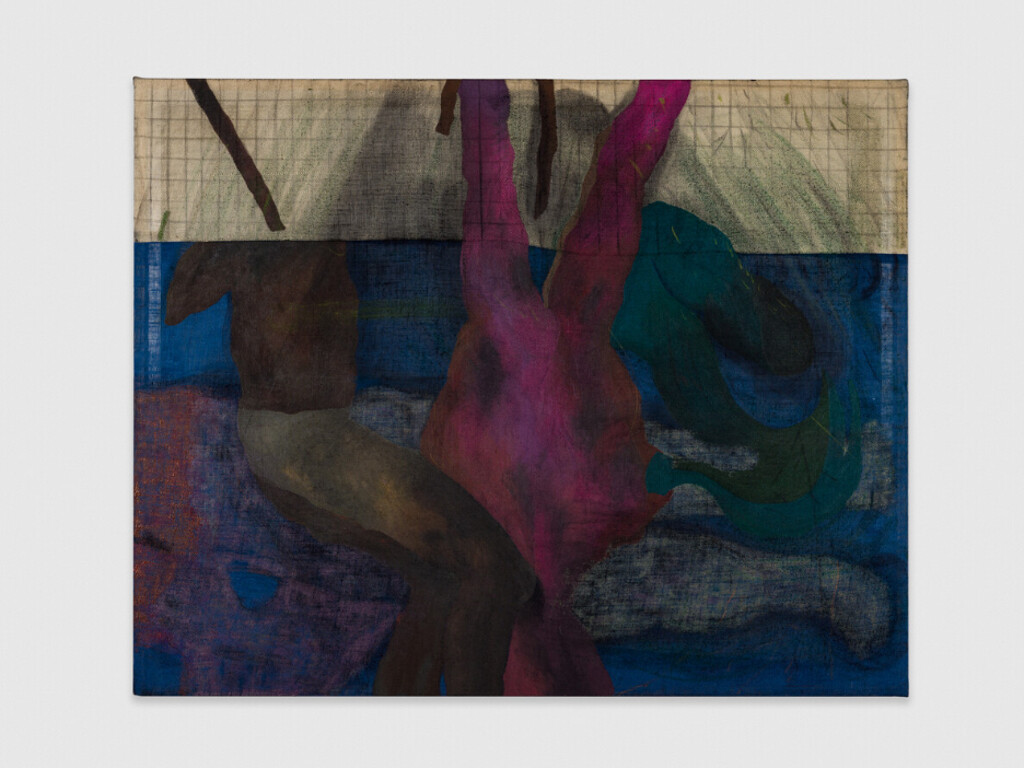
Image: Kaveri Raina, The return, it would always be the disaster after the disaster—a silent, yet harmless return, 2023, acrylic, graphite, oil pastel, burlap, 60 in × 75 in. A painting on brown burlap featuring inverted human-like figures. The upper half is gridded with graphite and the lower half is painted with a blue palette. Courtesy of the artist and PATRON.
In contrast to this uneasiness, a grid recurrently looms in her work, sometimes hidden behind overflowing colors and shapes, sometimes out in the open. Yet these lines are unavoidably dismantled by the burlap, as if the material did not allow for linearity. In the painting titled The return, it would always be the disaster after the disaster—a silent, yet harmless return, she submerges the grid and a human figure under what feels like water, almost as if the artist simultaneously grasps, resists, and exceeds traditional forms of human representation and belonging. Diasporic identities lie in between a social (and often a legal) effort to enclose and categorize them, and a permanent state of suspension. I wondered why she would replace the organic handmade pigment she used in her early work with artificial acrylic paint and traditional oil paint. I now wonder why it is so surprising to me that an Indian American would prefer not to codify her art through turmeric and fennel seeds.
Memory, material, and identity are intertwined in Kaveri Raina’s work and incessantly interrupted by the markings and the return of some sort of violence. Words like aftermath, doom, lack, disaster… linger in her practice and populate the titles of her paintings. They trigger past experiences while instilling a contained, implosive discomfort in the present—for her to mine for future potentiality and speculation. One can sense the simultaneous arrest and urgency of that intergenerational negotiation on the surface of the burlap.
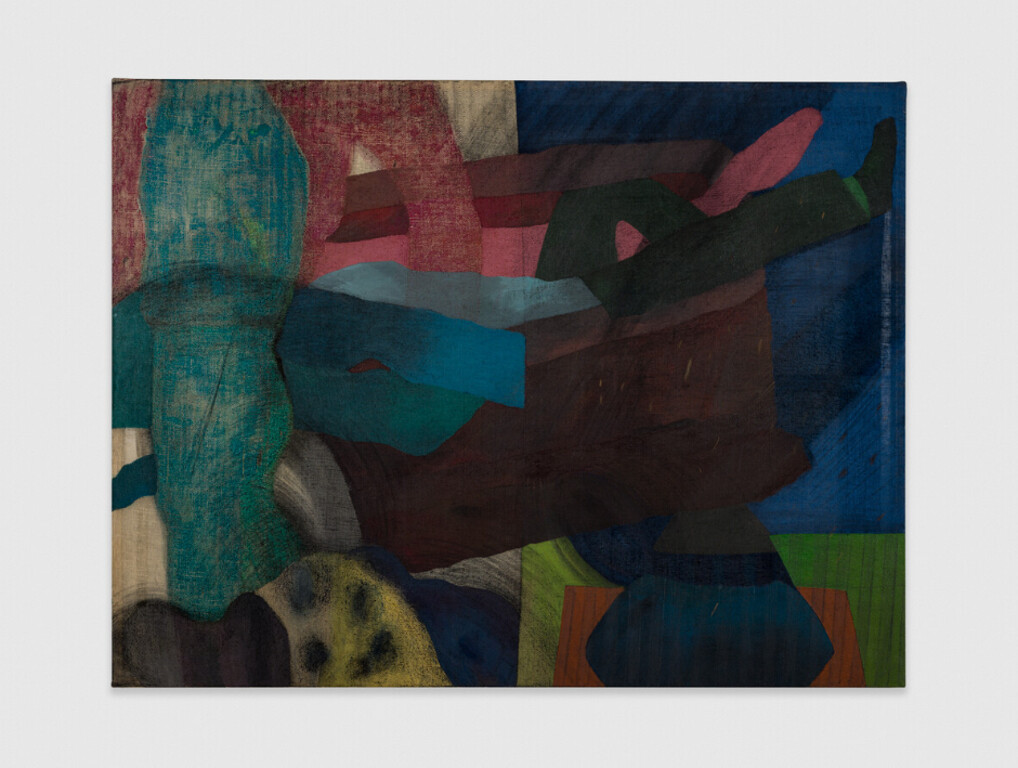
Image: Kaveri Raina, Clouds, loose clouds, slow wind, swift rains; shoveled away slowly in remembrance, 2023, acrylic, graphite, oil pastel, burlap, 85 in × 65 in. Courtesy of the artist and Patron Gallery. A colorful painting on burlap divided into asymmetric sections and featuring abstract shapes and human-like figures. Courtesy of the artist and PATRON.
But interestingly, there is also a language of hope embedded in her work, a ceremonial desire to memorialize all the streams of self that shape her identity. Raina’s paintings are products and witnesses of both violence and collective grief and mourning. Sometimes interlocked as diptychs, they suggest a collective and diasporic continuity of what seems to be contained in the body and the material. Threading the markings on the surface of the skin with the indentations of the burlap and the tears of memory, she establishes a ritual continuity between herself, her practice, and the multiple histories that inhabit her identity.
In our conversation, she mentioned that she stares at her paintings and observes them for long periods of time, forcing her gaze into the narrative of each piece. She also works in silence, with the sound of scraped and inscribed burlap flooding her studio. Discomfort is not necessarily fatalistic. In Kaveri Raina’s work, it is through unease that a generative place is found.
Kaveri Raina is represented in Chicago by PATRON. Take a look at Kaveri Raina’s work this year at her solo booth at Frieze New York with Casey Kaplan Gallery (May 1-5, 2024). The gallery will also feature her work at a solo exhibition in November 2024 in New York.
“Kaveri Raina: Songs of silence, yet bluebirds hum” was on view at PATRON from September 9 – November 4, 2023.

